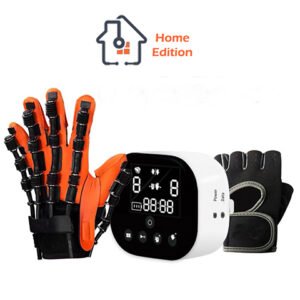Juvenile Rheumatoid Arthritis and Hand Rehabilitation
The most frequent kind of arthritis in children is juvenile rheumatoid arthritis (JRA). It’s a type of joint swelling that’s characterized by heat and pain. Arthritis can be acute, lasting only a few weeks or months before going away, or chronic, lasting months, years, or even a lifetime.
The exact cause of rheumatoid arthritis in children is unknown. It’s an autoimmune condition. White blood cells lose their ability to distinguish between the body’s own healthy cells and hazardous intruders such as bacteria or viruses in this type of sickness.
The following are some of the symptoms of Juvenile Rheumatoid Arthritis:
- Knees, hands, feet, ankles, shoulders, elbows, and other joints swell, stiffen, and hurt, especially in the morning or after a nap.
- Inflammation of the eyes.
- In a joint, there is warmth and redness.
- The capacity to use one or more joints is reduced.
- Fatigue.
- Reduced appetite, limited growth, and poor weight gain.
The disease subtypes, degree and damage of the disease, accompanying disease, and family acceptance all influence the pharmacological treatment options. Even yet, physical therapy is frequently required in the treatment of JIA.
If your hand is the damaged organ, hand rehabilitation can help you maintain or enhance the strength and flexibility of your hand’s muscles and joints.
Several hand rehabilitation devices have been developed in this vein to meet the demands of JIA patients and therapists all around the world. The only issue is that the quality of such devices varies from one manufacturer to the next.
In this regard, the SIFREHAB-1.1 and SIFREHAB-1.0 hand rehabilitation devices have been recommended as two of the finest model options available for producing considerable progress in JIA patients in a short period of time.
To begin with, these hand rehabilitation devices mobilize the diseased hand/arm in both flexion and extension. Because the software on these devices allows for a wide variety of therapeutic modifications, even patients with no active residual movement can benefit from passive mobilization from the start of treatment.
Additionally, this home rehabilitation device may provide resistance in the opposite direction, assisting with movement stabilization and hand muscle tone workouts.
The main advantage of these robot gloves is that they promote low-cost, easily adaptable home therapy, which is especially important for youngsters, who are the least tolerant of hospital and clinic treatments.
SIFREHAB-1.0 and SIFREHAB-1.1, in other words, provide a low-cost, safe, intensive, and task-oriented rehabilitation through home therapy, which can improve treatment efficacy by including the recovery of daily-living-activity functions as well as a home environment change.
To summarize, persistent damage from juvenile rheumatoid arthritis is now uncommon, and the majority of affected children heal completely without any long-term problems. Treatment is still necessary, especially because such a problem can be life-threatening for adults, let alone children. As a result, as a therapy alternative, parents and physiotherapists can choose the SIFREHAB-1.0 and SIFREHAB-1.1 Rehabilitation Robot Gloves, which have proven to be beneficial in treating this specific area.
Reference: JRA


